Mathematics > EXAM > University of phoenix, MTH 216 Checkpoint 4 Complete Solution (All)
University of phoenix, MTH 216 Checkpoint 4 Complete Solution
Document Content and Description Below
University of phoenix, MTH 216 Checkpoint 4 Complete Solution. A restaurant offers 10 appetizers and 7 main courses. In how many ways can a person order a two-course meal? Use the multiplication princ... iple with two groups of items. There are 70 ways a person can order a two-course meal. (Multiply 10 times 7) Pizza House offers 3 different salads, 3 different kinds of pizza, and 3 different desserts. How many different three course meals can be ordered? How many different meals can be ordered? 27 (Multiply 3 * 3 * 3 to get answer) A restaurant offers 4 appetizers and 7 main courses. In how many ways can a person order a two-course meal? Use the multiplication principle with two groups of items. There are 28 way a person can order a two-course meal Pizza House offers 2 different salads, 4 different kinds of pizza, and 4 different desserts. How many different three course meals can be ordered? How many different meals can be ordered? 32 Suppose we describe the weather as either sunny (S) or frigid (F). Answer parts (a) and (b) below. Using the letters S and F, list all the possible outcomes for the weather on two consecutive days. SS, SF, FS, FF If we are only interested in the number of S days, what are the possible events for two consecutive days. 0, 1, 2 Suppose we describe the weather as either clear (C) or frigid (F). Answer parts (a) and (b) below. Using the letters C and F, list all the possible outcomes for the weather on two consecutive days. CC, FC, CC, FF If we are only interested in the number of C days, what are the possible events for two consecutive days. 0, 1, 2 Use the theoretical method to determine the probability of the following outcome and event. State any assumptions made. Tossing two coins and getting either one head or two heads Assuming that each coin is fair and is equally likely to land heads or tails, the probability is 3/4 An experiment consists of drawing 1 card from a standard 52-card deck. What is the probability of drawing a black card? ½ You toss a coin 300 times and get 243 heads. Complete parts (a) - (c) below. Determine the relative frequency probability. 243/300 or 0.81 Determine the expected frequency of the event. 150/300 or 0.50 Do you have reason to suspect the coin is unfair? Explain Yes, because the relative frequency is not near the expected frequency. Use the theoretical method to determine the probability of the following event. Sharing a birthday with another person when you both have birthdays in December 1/31 You toss a coin 200 times and get 26 heads. Complete parts (a)-(c) below. Determine the relative frequency probability. 26/200 or 0.13 Determine the expected frequency of the event. 100/200 or 0.50 Do you have reason to suspect the coin is unfair? Explain Yes, because the relative frequency is not near the expected frequency. Use the theoretical method to determine the probability of the following event. Sharing a birthday with another person when you both have birthdays in February (not born on a leap year). 1/28 Find the odds for and the odds against the event rolling a fair die and getting a 4, a 2, or a 6. The odds for the event are 1 to 1. The odds against the event are 1 to 1 Find the odds for and the odds against the event rolling a fair die and getting a 6 or a 3. The odds for the event are 1 to 2 The odds against the event are 2 to 1 The odds on (against) your bet are 3 to 4. If you bet $8 and win, how much will you gain? $6 – Divide the bet by the “to” amount; then multiply that number the odd amount (3). Find the odds for and the odds against the event rolling a fair die and getting a 2 or a 5. The odds for the event are 1 to 2 The odds against the event are 2 to 1 An experiment consists of drawing 1 card from a standard 52-card deck. What is the probability of drawing a red 9? 2/52 or 1/26 An experiment consists of drawing 1 card from a standard 52-card deck. What is the probability of drawing a red king? 2/52 or 1/26 Decide which method (theoretical, relative frequency, or subjective) is appropriate, and compute or estimate the following probability. Drawing a black 2 or jack of diamonds from a standard deck of cards. The theoretical method should be used. [Show More]
Last updated: 2 years ago
Preview 1 out of 12 pages
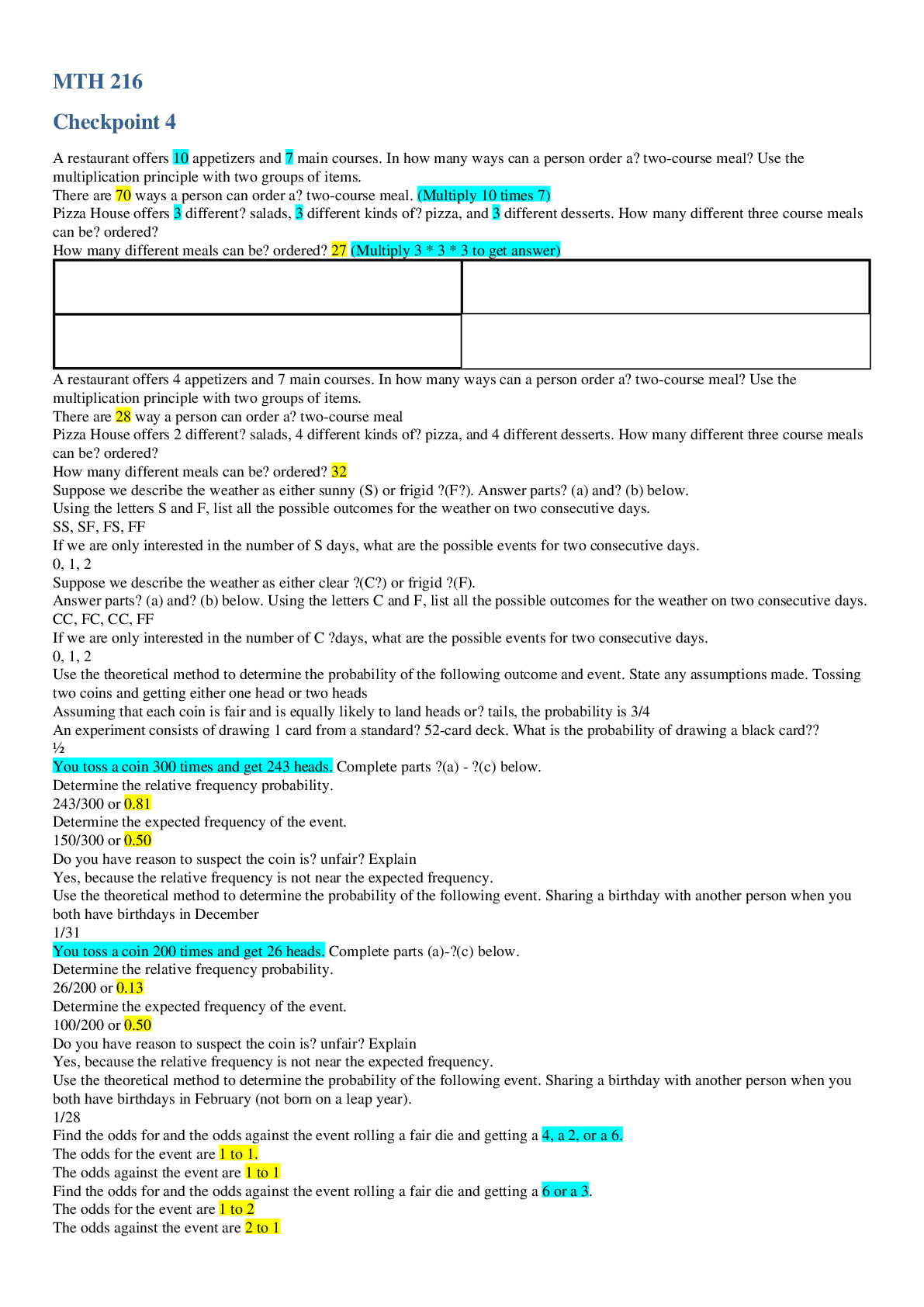
Buy this document to get the full access instantly
Instant Download Access after purchase
Buy NowInstant download
We Accept:

Also available in bundle (1)

University of phoenix, MTH 216 Checkpoint 1 to 5 Complete Solutions. GRADED A
University of phoenix, MTH 216 Checkpoint 1 to 5 Complete Solutions. GRADED A
By Quality Suppliers 4 years ago
$30.5
5
Reviews( 0 )
$13.00
Can't find what you want? Try our AI powered Search
Document information
Connected school, study & course
About the document
Uploaded On
Feb 25, 2021
Number of pages
12
Written in
Additional information
This document has been written for:
Uploaded
Feb 25, 2021
Downloads
0
Views
79


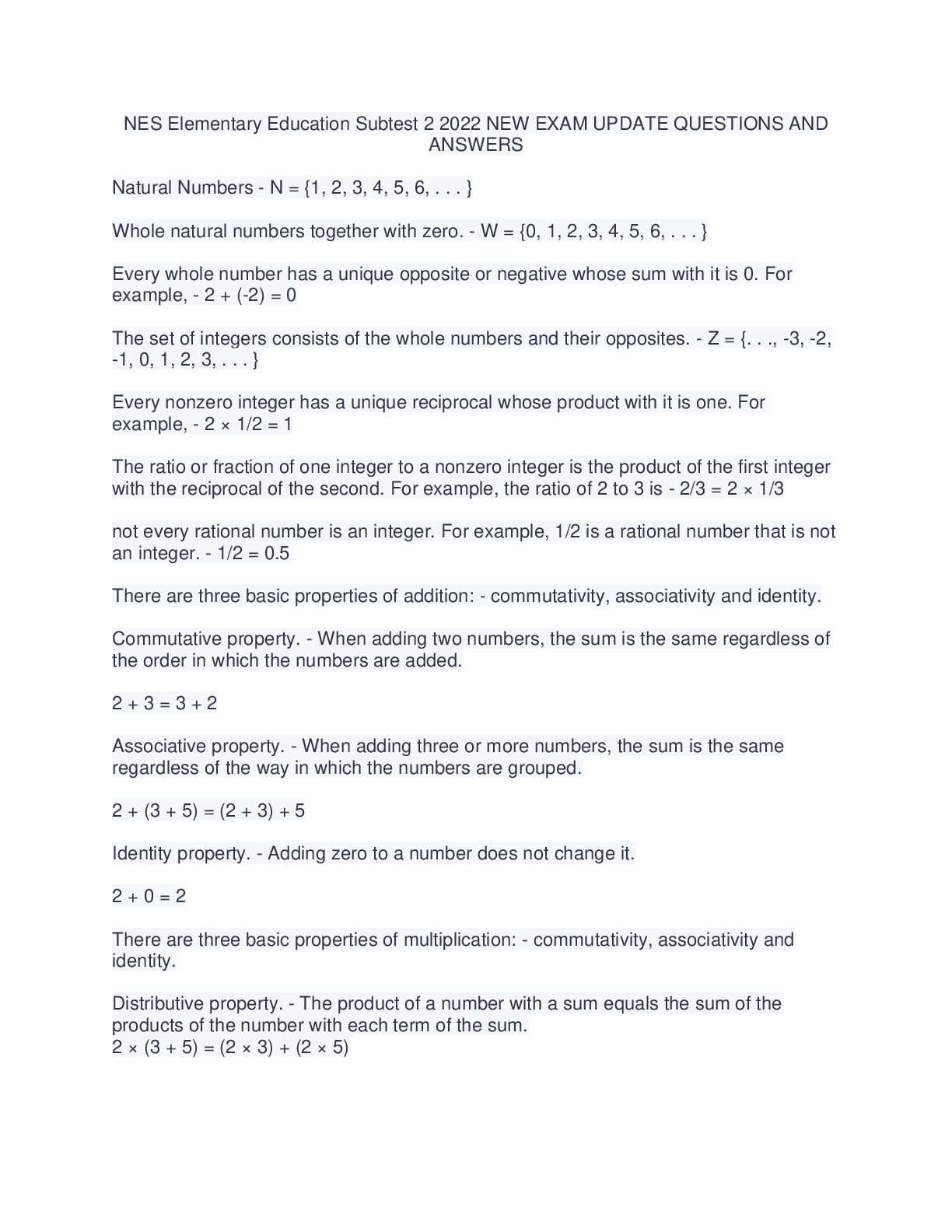
.png)

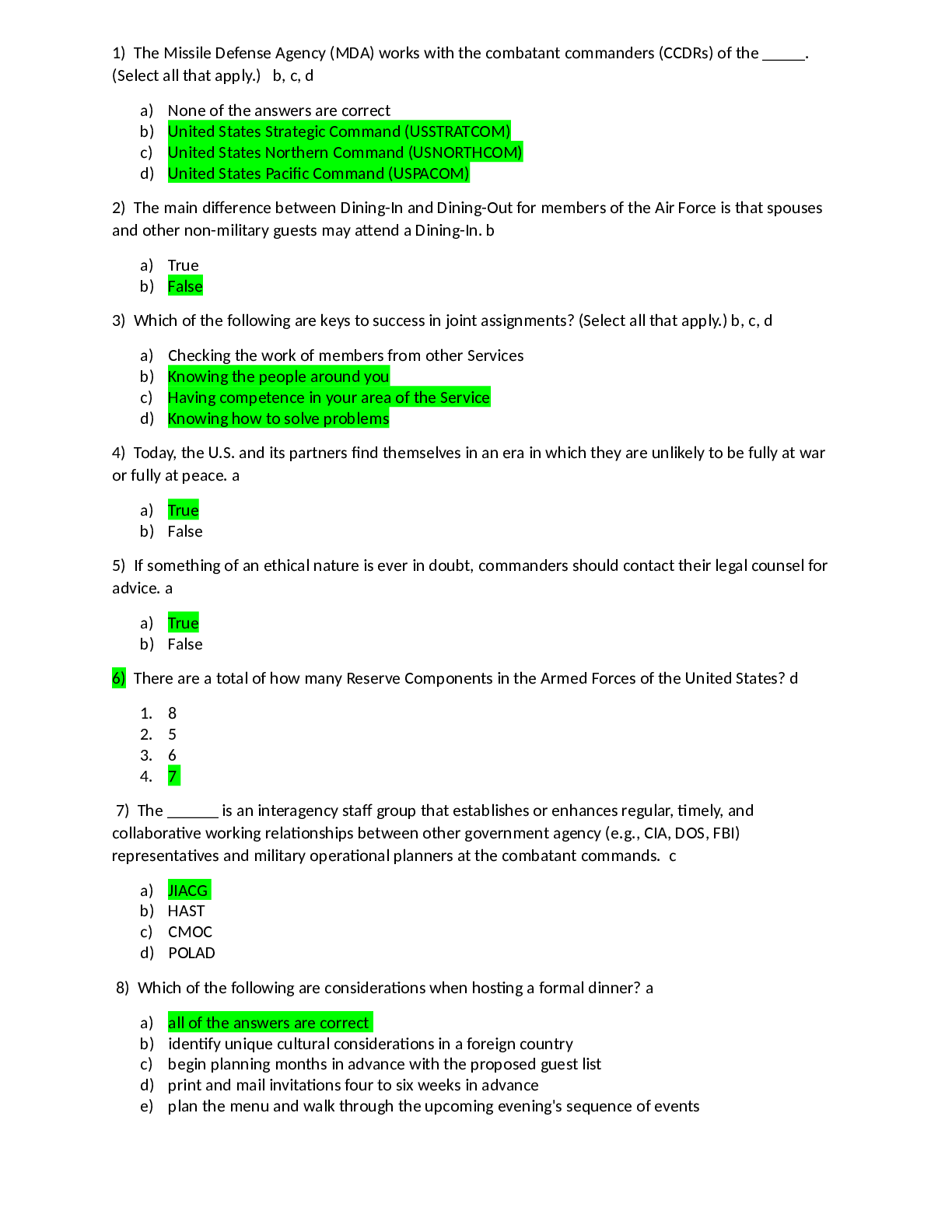
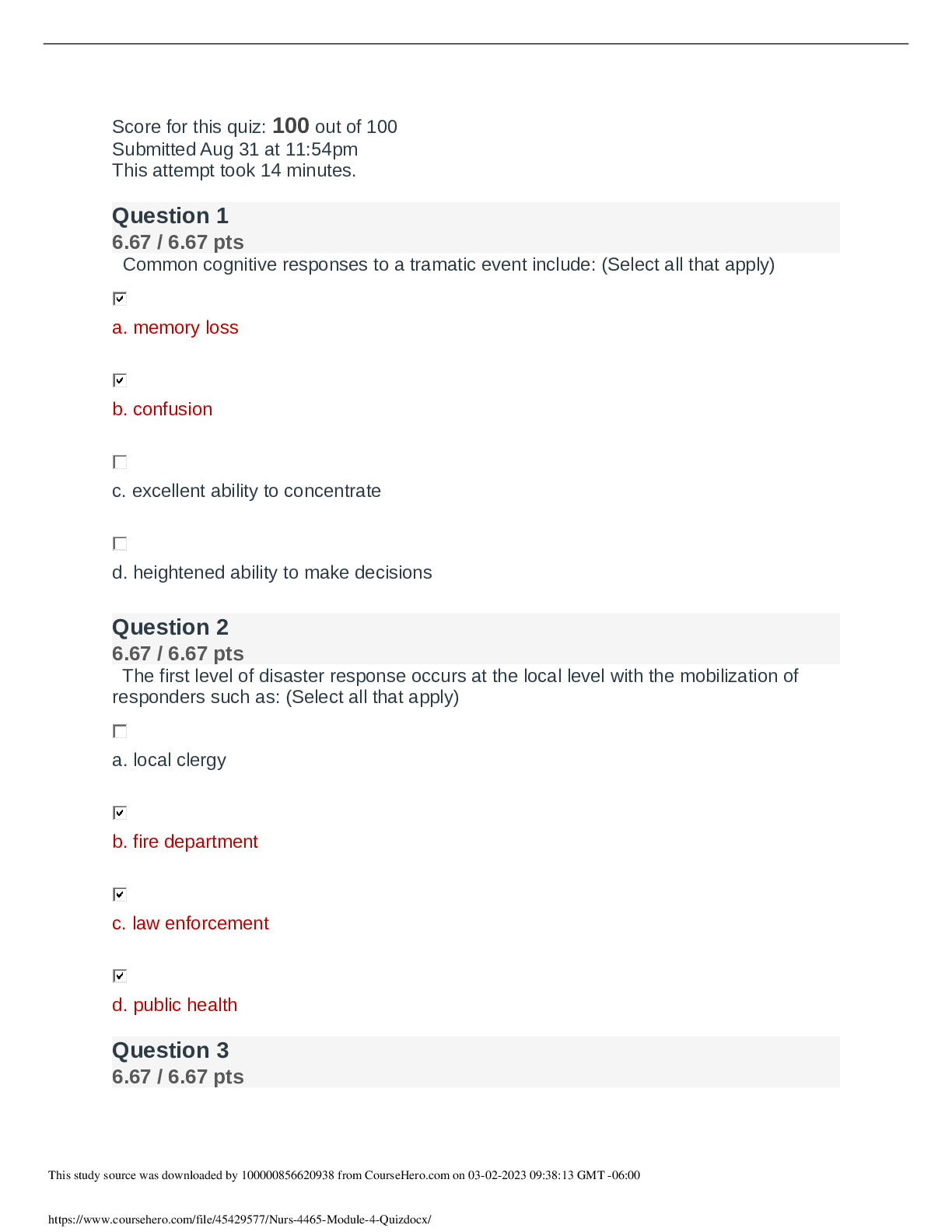
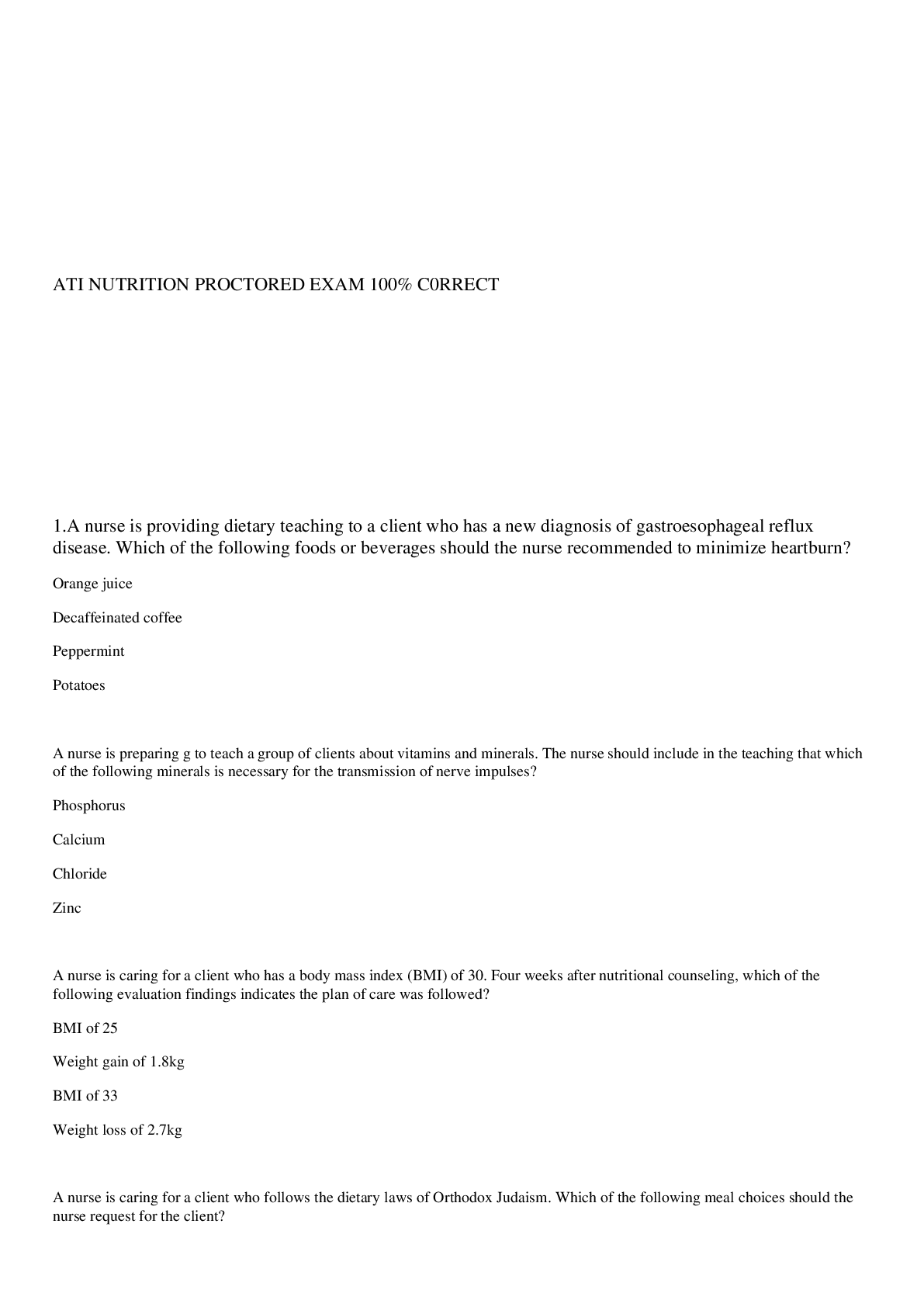
.png)
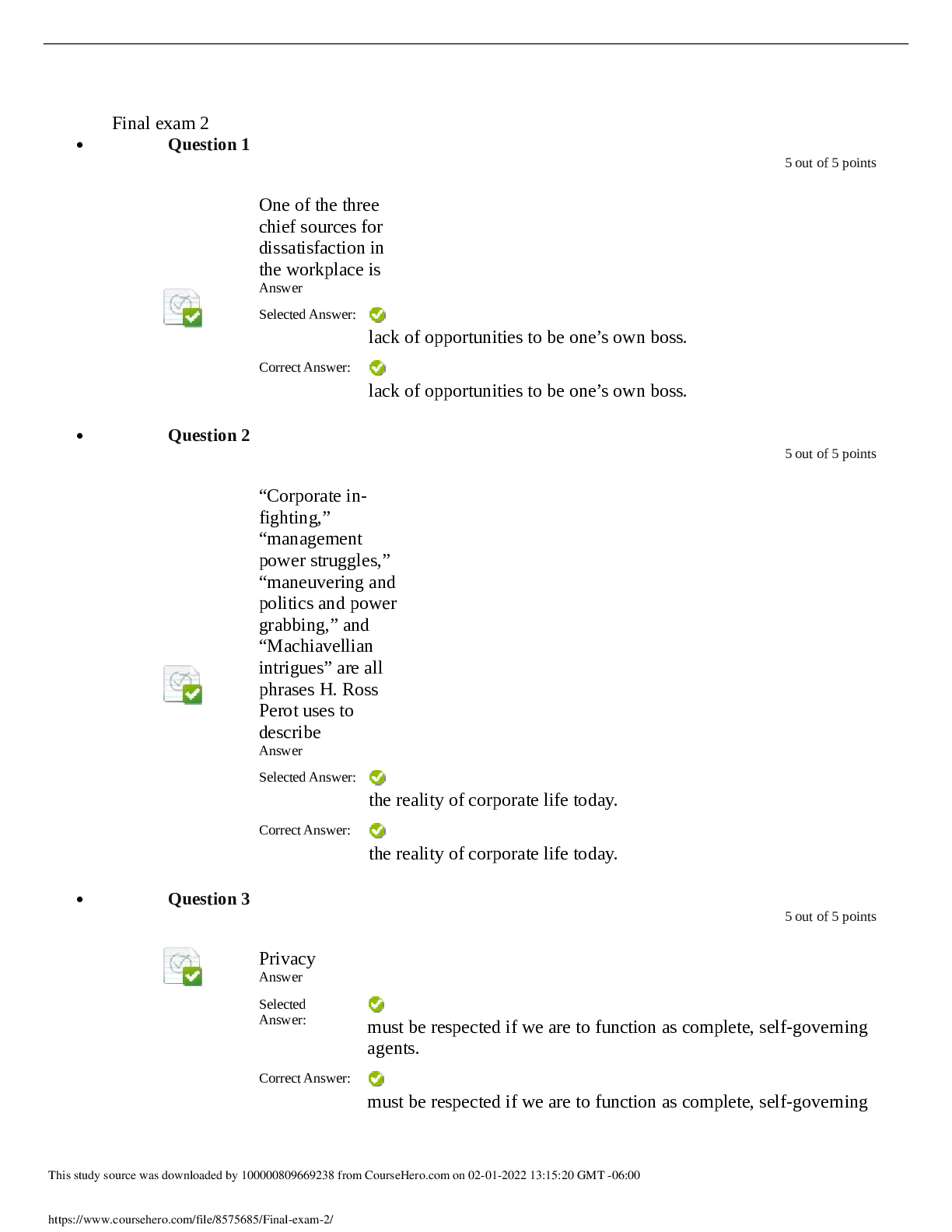
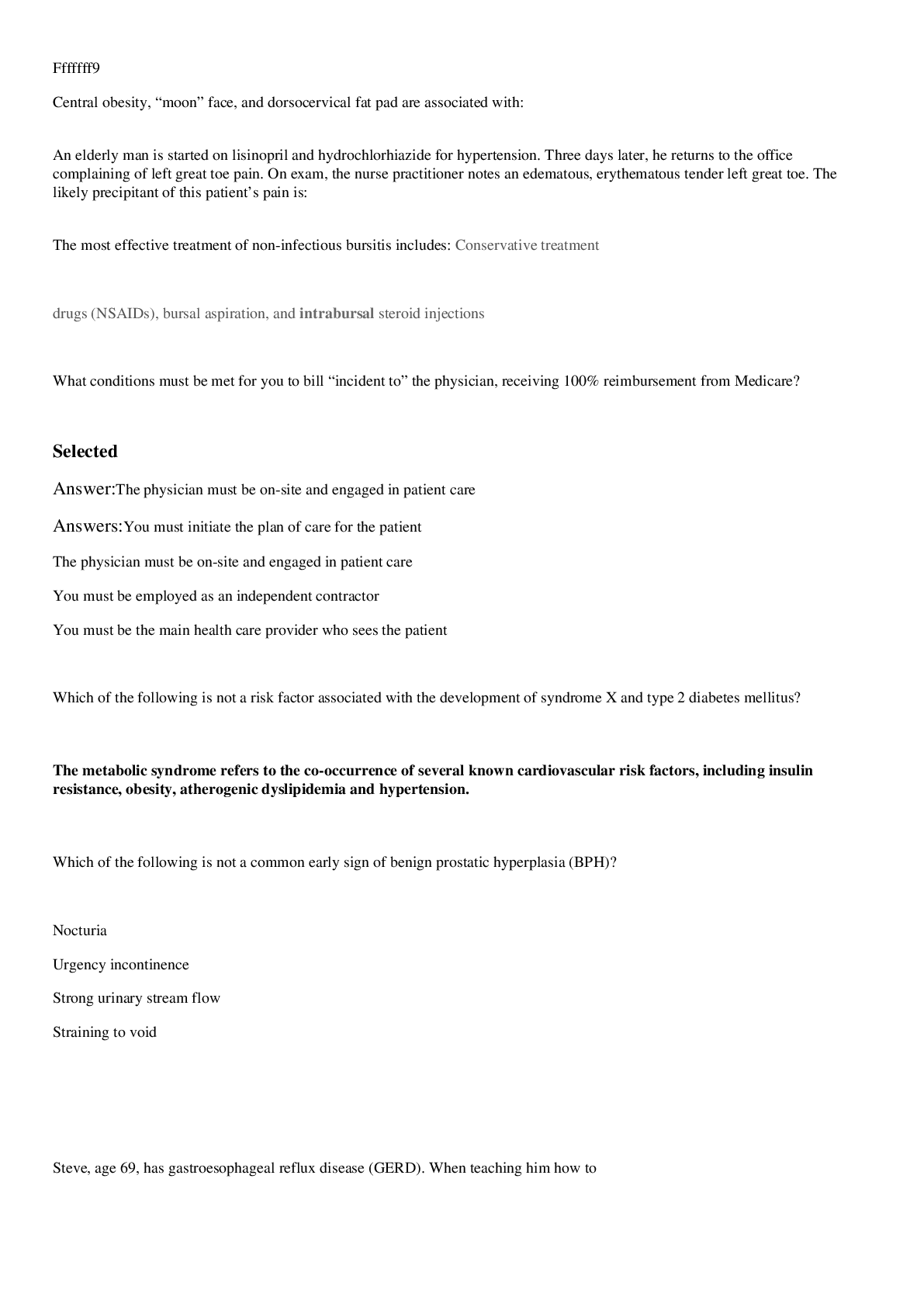
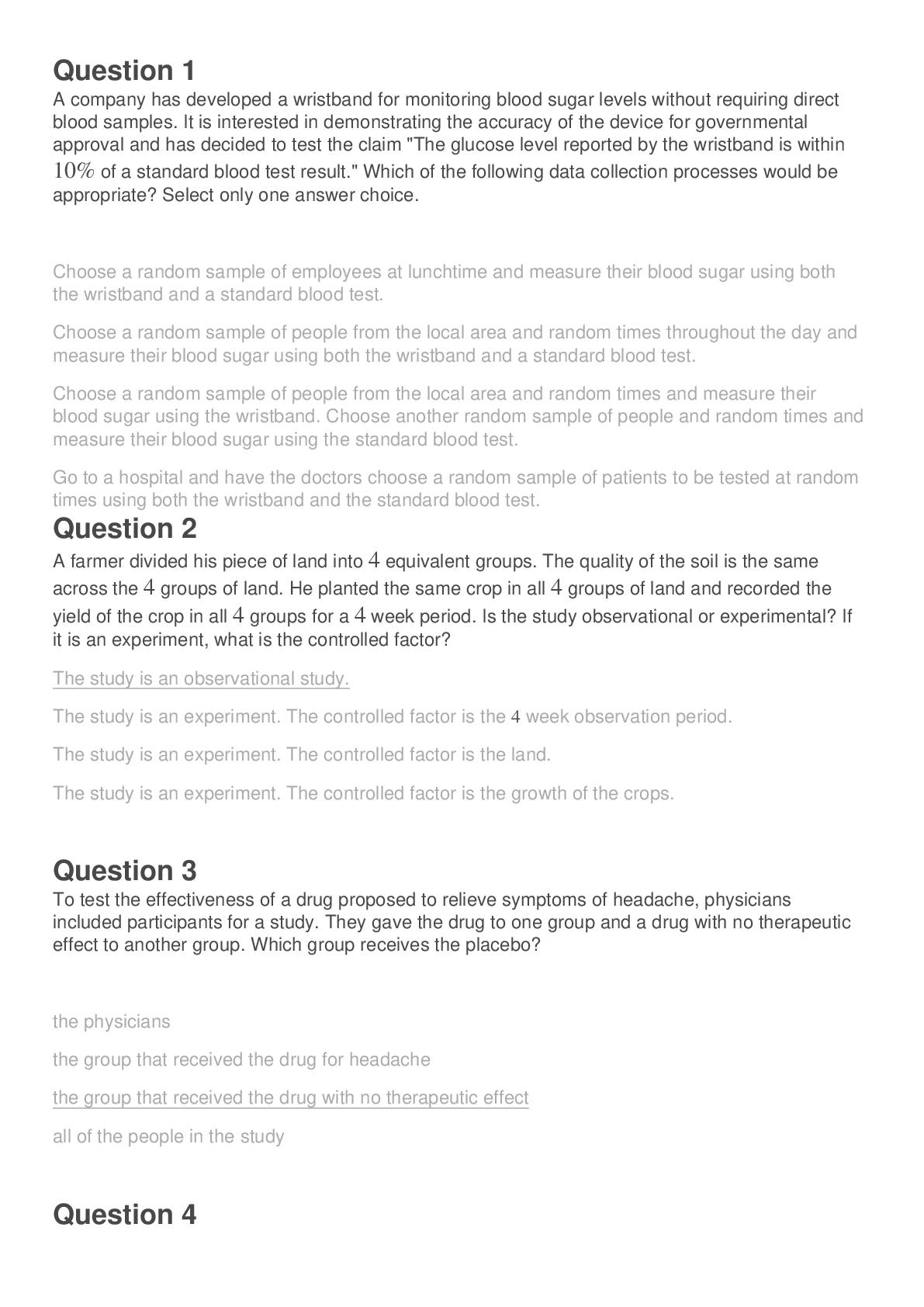
.png)


